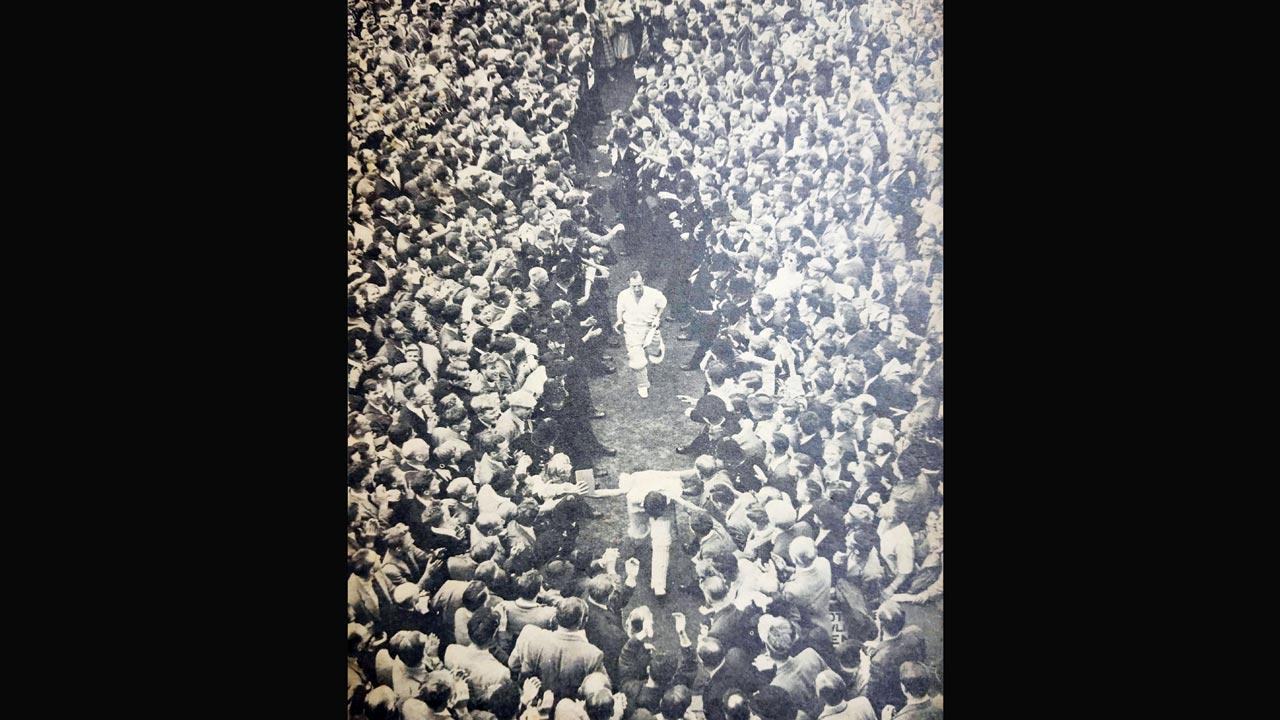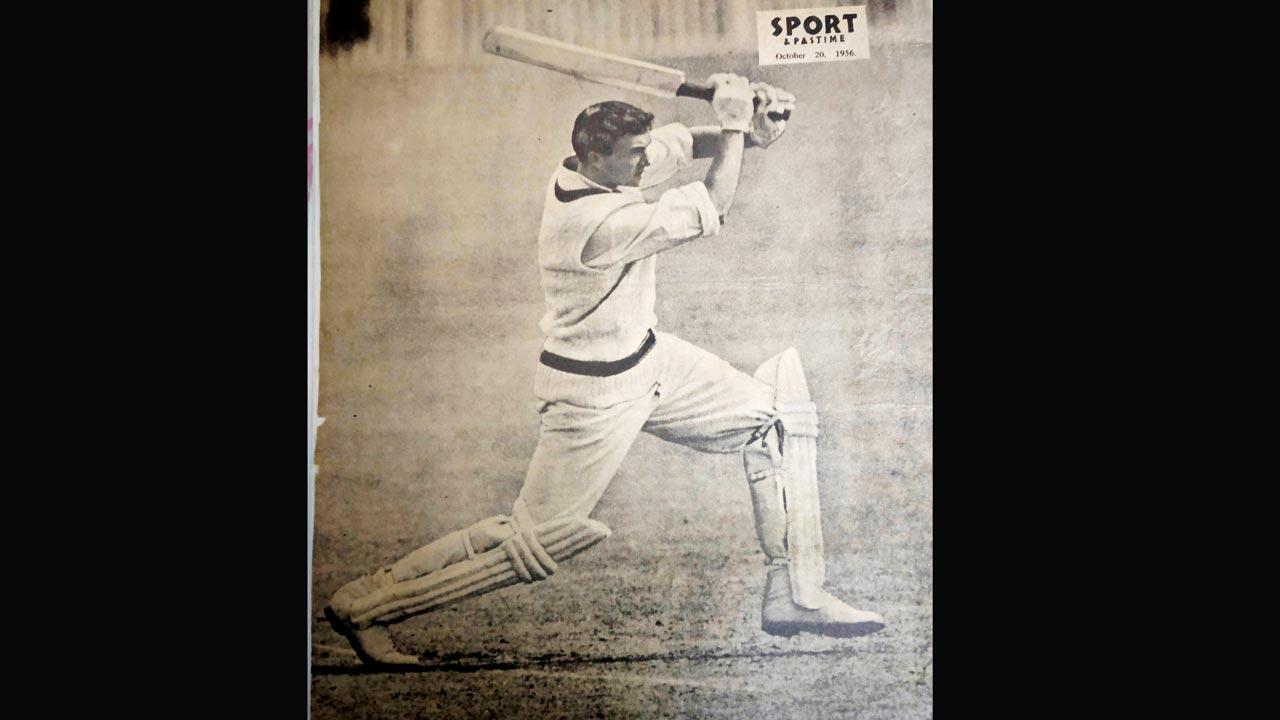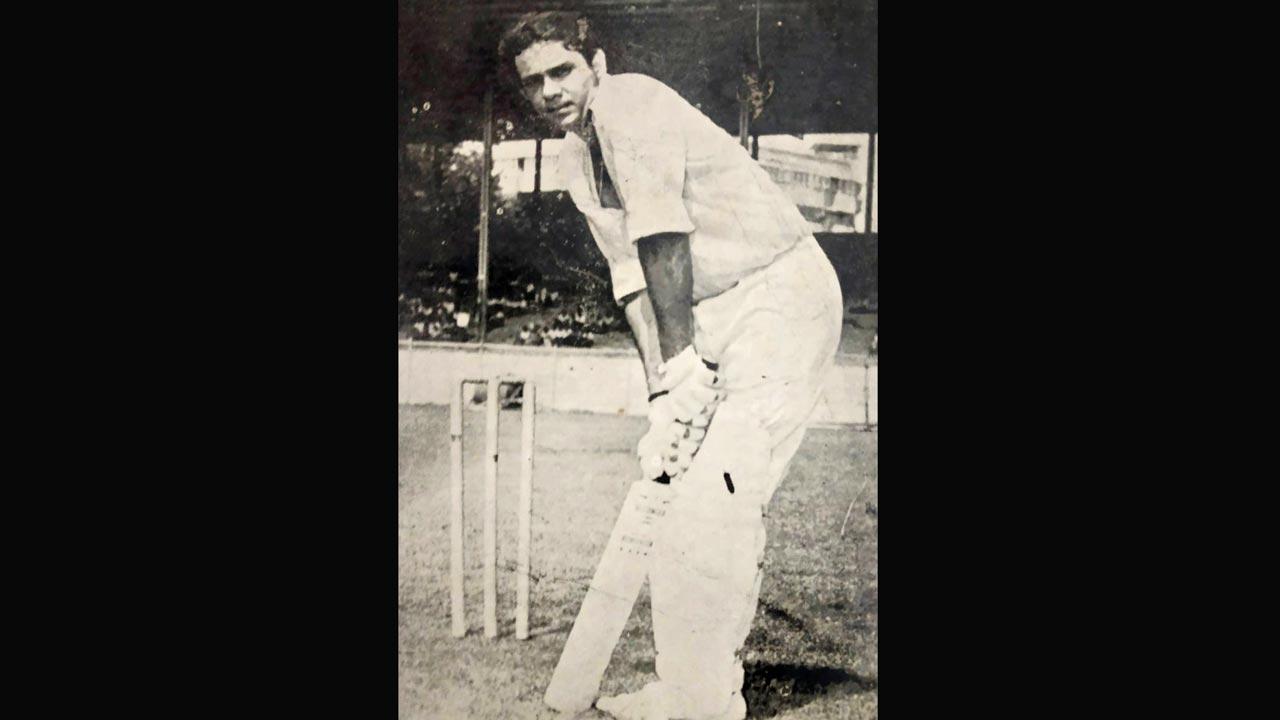What started out of curiosity for a game has become a lifelong obsession for a collector of Test cricket imagery who has spent 55 years building a tome of 15,000 rare pictures of the men in white

Prakash Mungekar, a retired engineer, has been collecting Test cricket imagery since the age of four
Prakash Mungekar was only four, when cricket came into his life. Then residing in the IIT-Bombay campus in Powai where his father worked, Mungekar, now 61, remembers how he first heard the game on the radio, on the afternoon of October 10, 1964. At the time, he couldn’t make sense of the “loud noise” coming out of the system, initially confusing it for a war report. “I asked my mother and she told me that it was live cricket commentary,” he recalls. Puzzled, nonetheless curious, he continued to listen to the game, not knowing that this was the second Test being played between India and Australia at the Brabourne Stadium in Mumbai. That day, India won the game by two wickets. Since such a victory was so rare, the campus, he says, was in a tizzy. “People were playing drums and bursting crackers for hours,” he says. “In the evening everyone was talking about Chandu Borde [who won the game for India]. He also became the first player I was introduced to.”
ADVERTISEMENT
Mungekar, a retired engineer, remembers being awestruck by that experience. Noticing his son’s interest in the game, his father took him to the park the following day, and showed him how cricket was played. Less than a week later, while emptying sugar from inside a paper packet into a jar, he chanced upon a photograph of a man holding a bat. The picture was that of Sir Don Bradman. This set the ball rolling for a 55-year-long obsession of collecting Test cricket imagery. Today, Mungekar is the proud owner of over 15,000-plus photographs that he has sourced from a variety of sports and regional magazines, newspapers, books and old packaging.
 Mungekar’s personal favourite is a photograph of England’s Bill Edrich and Denis Compton heading back to the pavilion after defeating Australia at The Oval, London in 1953, which he sourced from Brian Johnston’s book, All About Cricket. England had won the Ashes after 19 long years
Mungekar’s personal favourite is a photograph of England’s Bill Edrich and Denis Compton heading back to the pavilion after defeating Australia at The Oval, London in 1953, which he sourced from Brian Johnston’s book, All About Cricket. England had won the Ashes after 19 long years
The collection has had very organic and humble beginnings—it started with a young Mungekar sourcing photographs in newspapers that would come home. “When my friends, classmates and neighbours learnt of my fascination for cricket photographs, they’d give me their newspapers. I didn’t need to go all out to build my collection. It was growing on its own.” By the age of seven, Mungekar had already put together his first album, comprising 56 photographs. His father, who knew India spinner Bapu Nadkarni personally, decided to show his son’s album to him. “My dad met Bapu Nadkarni and Ajit Wadekar at Shivaji Park, and they were quite impressed with what I had put together.” That encouraged him to continue.
Getting hold of a 1967 Sport and Pastime magazine issue, which had Farrokh Engineer on the cover, opened up a new world for him. “From then on, I started eyeing a lot of magazines, including Illustrated Weekly of India and Dharmayug. Every four or five months, I would visit the second-hand booksellers and raddiwallahs at Maheshwari Udyan in Matunga and Fort along with my father, and pick up these old publications and books.”

A 1955 photograph of Australian cricketer Richie Benaud from the Sport and Pastime magazine. “In my entire collection, there is no photograph like this one. Because he is not wearing a helmet, you can even see his facial expression clearly. Unlike today, where most cricket jerseys are filled with sponsor tags, this one is plain white, and has zero distractions. Even the backdrop is plain,” he says Mungekar
Mungekar also accumulated toffee and ice cream packets, which had cricketers’ photos printed on them. “Some of them were tiny, thumb-size pictures. Unfortunately, because of the poor printing quality, many faded with time.” In the 1970s, there was a one-of-a-kind offer doing the rounds, which suited young collectors like him, where if you’d send two empty cigarette box packets of the Four Square brand to a certain postal address, you’d receive a 4 by 6 inch-sized black and white photo of a Test cricketer. “A picture that was missing from the collection was that of Ashok Mankad. One day, I wrote to them, asking if they could share that particular picture. They were kind enough to write back to me saying that it was currently out of stock, but that they’d have it sent, as soon as it arrived. They kept their promise.”
One of Mungekar’s earliest inspirations was Avinash Kotiya, his then neighbour, who was also 15 years his senior. “Every evening, around 20 of us boys would come together to listen to his cricket stories. He knew his cricket history down pat, and he could rattle off player names. Sometimes, those sessions would go on for hours,” he recalls. Kotiya’s knowledge of the game, he says, helped him understand the vast talent pool in cricket better. “He continues to be my mentor.”
 A 4 by 6 inch-sized black and white photo of right-hand batsman Ashok Mankad, which Mungekar got hold of in exchange of two empty packets of a cigarette brand
A 4 by 6 inch-sized black and white photo of right-hand batsman Ashok Mankad, which Mungekar got hold of in exchange of two empty packets of a cigarette brand
Until his 30s, Mungekar had a tight budget of not more than Rs 150-Rs 200 for his collection. However, as his collection grew, he didn’t mind loosening his purse strings, often spending thousands on rare books. At one point, he had a network of 36 raddiwallahs, right from Colaba to Thane, who’d tip him off about a new sports magazine. “I think the 1960s was a great time for collectors like me. Most print publications would carry blow-up photos, which you can’t find anymore in print.” Mungekar shows us a 1955 photograph of Australian cricketer Richie Benaud from the Sport and Pastime magazine. “This is such a classic picture. In my entire collection, there is no photograph like this one. Because he is not wearing a helmet, you can even see his facial expression clearly. Unlike today, where most cricket jerseys are filled with sponsor tags, this one is plain white, and has zero distractions. Even the backdrop is plain,” he says, while also explaining why he only collects pictures from Test matches. “I have always been a Test cricket fan. I don’t watch one-day, T20 and IPL matches, and bother collecting pictures of cricketers in these coloured jerseys.” If he has made an exception, it was for Kapil Dev’s 1983 World Cup final.
One of his favourite photographs in the collection is that of England’s Bill Edrich and Denis Compton heading back to the pavilion after defeating Australia at The Oval in London in 1953. England had won the Ashes after 19 long years, and in the picture, as evident, the victory spurred the crowds to throng the grounds immediately. “I got this from Brian Johnston’s book, All About Cricket. If you see the picture carefully, you’ll see that the police had to create a chain to stop the crowd as the players struggled to reach the pavilion. This is one of those rare moments in England’s cricket’s history, and the picture gives a sense of the drama that unfolded.”
Though exhibiting some of these rare pictures has been at the back of his mind, Mungekar is currently focused on digitising the collection, something which is going to take years. Often, a friend or acquaintance leads him to a cricketer or a relative, for whom a single picture can mean the world. “This one time, in the late 1980s, while I was taking a stroll at Shivaji Park, I saw this woman instructing her son on the field. Impressed, I asked her how she knew so much about the game. She told me that she had a cousin who briefly played international cricket. I asked for his name, but she hesitated saying that I wouldn’t know him, as he played in 1960 [much before my time]. I insisted and she said, Vasant Ranjane. ‘Of course, I knew him,’ I said. She was surprised that I had a 1962 photograph of his. I gifted her a colour copy of that picture. These are the little things that bring me joy.”
 Subscribe today by clicking the link and stay updated with the latest news!" Click here!
Subscribe today by clicking the link and stay updated with the latest news!" Click here!







